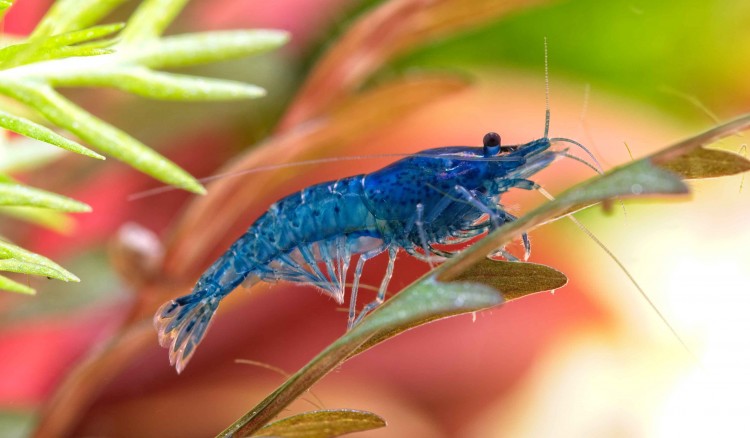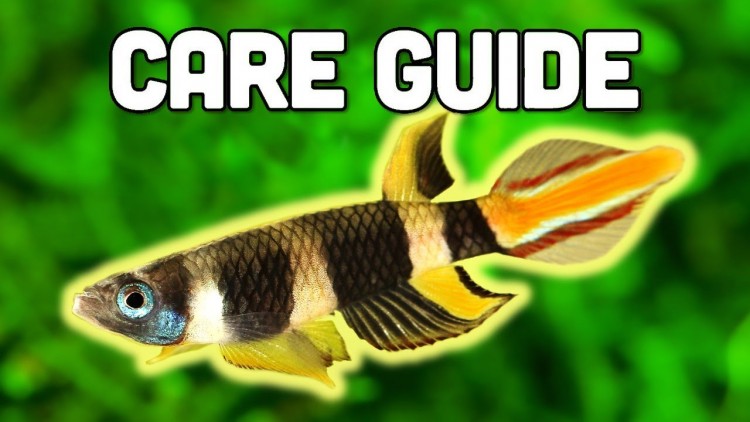A Guide To Freshwater Shrimps In The Aquarium
- Sep 12, 2021
- Rita
- 3073 0 0

If you think about an aquarium, the first thing that probably comes to mind is fish. If you find a fish-only tank a bit boring, why not consider adding some invertebrates.
There are a vast number of invertebrates for the aquarium of which shrimp is probably one of the most entertaining to watch. There are even aquarium hobbyists out there that create shrimp-only tanks.
If you would like these fascinating creatures in your tank, you’ll have quite a few species to choose from. Let’s take a look at the different freshwater shrimp species to consider as well as some of their care information.
Freshwater Shrimp - Which One Is Best For Your Tank?
You might be a bit confused when going shrimp shopping. There are loads of shrimp varieties to choose from after all. To make things a bit easier, I’ve made a simple summary of each shrimp species.
Neocaridina Or Caridina
There are two main genera of freshwater shrimps called Neocaridina and Caridina. The word genus simply means a group of organisms that are related to each other, in this case, shrimps. Let’s take a closer look.
-
Neocaridina
One of the most popular shrimp species in the aquarium world is the Red Cherry Shrimp from the Neocaridina genus. Neocaridina shrimps are usually the go-to shrimps for beginners. They are quite hardy, easy to breed, and easy to care for.
Due to their adaptable nature, they are excellent for those establishing their first aquariums. They also look great in planted tanks due to their vivid colors ranging from black, red, blue to even green. Just make sure not to keep multiple colors in one tank since the offspring will usually turn out quite dull. You can keep them with Caridina shrimps, however, since the two genera wouldn’t interbreed.
Neocaridina shrimp species and variants
- Red Cherry Shrimp
- Sakura Cherry shrimp
- Fire Red Cherry shrimp
- Painted Fire Red Cherry shrimp
- Yellow/Gold shrimp
- Sunkist Orange shrimp
- Blue Dream Shrimp
- Blue Jelly Shrimp
- Green Jade shrimp
- Snowball shrimps
- Carbon shrimps
- Chocolate shrimps

If you’re thinking of getting a Neocaridina shrimp, keep the following general water parameters in mind:
- pH: 6.5 - 7.5
- KH: 1 - 4
- GH: 6 - 8
- TDS: 80 - 200
- Water Temp: 65 - 73°F (18 - 23°C)
Each species have slight variations in these parameters so make sure to research your individual species to get it just right.
-
Caridina
Caridina shrimps are harder to care for than Neocaridina shrimps. If you want a multi-shrimp species tank, however, you can easily keep Neocaridina and Caridina together without the risk of interbreeding. Caridina shrimps are not for beginners due to how sensitive they are when it comes to water parameters.
If you’re considering a Caridina shrimp species, take a look at the following options:
- Tangerine Tiger shrimp
- Racoon Tigers
- Yellow King Kong shrimp
- Aura Blue Tiger shrimp
- Blue Bolt Bee shrimp (Crystal variety available)
- Shadow Panda Bee shrimp (Crystal variety available)
- Golden Bee shrimp
- Snow White Shrimp
- Amano shrimp
- Sulawesi shrimp

If you would like to add a Caridina shrimp to your tank, consider the following general water parameters (Keep in mind that Caridina shrimp are very sensitive to water parameters and thus should be researched individually before you buy):
- pH: 6.2 - 6.6
- KH: 2 - 6
- GH: 4 - 8
- TDS: 80 - 100
- Water Temp: 70 - 73°F (21 - 23°C)
Caridina shrimps have a high mortality rate and can be very difficult to breed. If you want to keep them in a tank with Neocaridina shrimps, make sure the water parameters of both species match. Caridina shrimps are very sensitive and will die quickly if the water isn’t right for them.

The Amano Shrimp and Cherry Shrimp cleaning up algae by mobile_gnome
Also, keep in mind that Neocaridina shrimps prefer hard water where Caridina shrimps prefer soft water.
Setting Up A Shrimp Tank
Shrimps just like fish have some basic requirements when it comes to their tank set up. Here are a few things you should keep in mind.
-
Tank size
Shrimps can survive in a tank as small as 5 gallons. This is not ideal however since small tanks tend to have large fluctuations in temperature as well as water parameters. Shrimps, being very sensitive to these changes, will have a higher mortality rate in a small tank. That is the reason why bigger is always better.
Unfortunately, going too big also has its drawbacks. Shrimps are quite small which means they will look very underwhelming in a tank bigger than 40 gallons. For this reason, if you want your tank to look spectacular without the risk of major parameter changes, consider going for a tank between 20 to 30 gallons.
If you’re considering a second-hand tank, make sure that tank has never been in contact with copper. Copper is very poisonous to shrimps and any residue in the tank will cause premature deaths.
-
Substrate
The type of substrate you choose will depend a little on the type of shrimp you’re keeping. If you have Neocaridina shrimps, an inert substrate will be best since it doesn’t affect water parameters. You will need to supplement the plants growing in your tank, however.
For Caridina shrimps, you can either use the inert substrate or the active substrate. Active substrate tends to soften the water which is ideal for Caridina shrimps. This substrate also promotes plant growth without excessive supplementation.
-
Plants
Shrimps do best when kept in planted tanks. They also look spectacular contrasting with the plant life in your tank. If you’re considering live plants, you can choose one of the following shrimp friendly plants:
- Anubias
- Java Moss
- Java Fern
- Moss Balls
- Cryptocoryne
- Rotalas
- Duckweed & Water Lettuce
There are of course many other plants that also work with shrimps, but they need a bit more care to thrive in your tank.

-
Lighting
The lighting in your tank will mostly depend on the plants you plant to keep. If you don’t have any live plants, a basic LED lighting system will be sufficient to keep your shrimps healthy. If you have special requirements for the plants in your tank, you can upgrade the lighting as required without affecting your shrimps. Just make sure there are ample hiding spots.
-
Water
Shrimps are very sensitive to water parameters. It is best to keep a water test kit handy to test your water parameters regularly. These strips should include testing for ammonia, nitrites, nitrates, KH, GH, pH, and TDS.
Ammonia, nitrates, and nitrates are the waste chemicals in the water. If these spikes, your shrimp will be poisoned and die off quickly. That is why it is so important to cycle your tank for at least a month before you get shrimp.
KH, GH, and pH will need to be tested once in a while to make sure they stay within the desired parameters of the type of shrimp you’re keeping. If these fluctuate too much, you will have some shrimp deaths. These parameters test the hardness (amount of minerals) and acidity/alkalinity of the water in your tank.
TDS is an added parameter when it comes to shrimp keeping. TDS tests the total dissolved solids in the water of your tank. If this number is too high or too low, it can affect the health of your shrimps.
-
Filtration
The best filters to use for shrimp are sponge filters or Hang-On-Back (HOB) filters. These filters don’t produce a lot of flow and also prevent shrimp babies or even adults from being sucked into the filtration system. Some HOB filters need some modifying to prevent the shrimps from being sucked up, so just keep that in mind when buying a filter for your tank.
- Heating
Heating is quite a debatable subject among shrimp keepers, especially those keeping Neocaridina shrimps that can live in cooler water. It’s best to keep a thermometer in your tank with a heater ready to be used.
If the water temperature regularly drops below the excepted range for the type of shrimp you’re keeping, it is best to turn on your heater. If the water temperature is fairly stable in the accepted range, a heater might not be needed. Just keep in mind that shrimp are quite sensitive to changes.
-
Tank Mates For Shrimps
Shrimps can be kept with a number of fish species as long as the tank is big enough, the fish small enough and there are ample hiding spots. Here are a few fish species that make great shrimp companions:
- Small Tetras – Neon Tetras
- Small bottom-dwelling fish like Corys – Particularly Pygmy Corys
- Harlequin Rasboras
- White Cloud Minnows
- Glassfish
- Otocinclus
- Kuhli Loaches
Keep in mind that your shrimp babies will most likely be eaten. It is best to set up a separate breeding tank for your shrimp babies. As soon as you notice one of your shrimp carrying eggs under its tail, remove it and place it in the separate breeding tank. Just make sure the water parameters of the breeding tank exactly match the parameters of the main tank. Also, make sure your breeding tank stays cycled to prevent deaths.
Final Thoughts
Shrimp tanks are very lively and full of personality. There will never be a dull moment with these little critters around. Keep in mind that they can be quite a challenge to keep so make sure you’re ready before buying shrimps.
If you keep larger shrimps, they are less likely to get sucked into the filter or eaten by other community fish in your tank. A good example of a larger shrimp is an Amano shrimp.
Other benefits of shrimp include them cleaning your tank. If you’d like to keep these amazing critters, make sure to get them from a reputable source. Happy shrimp keeping!







About author